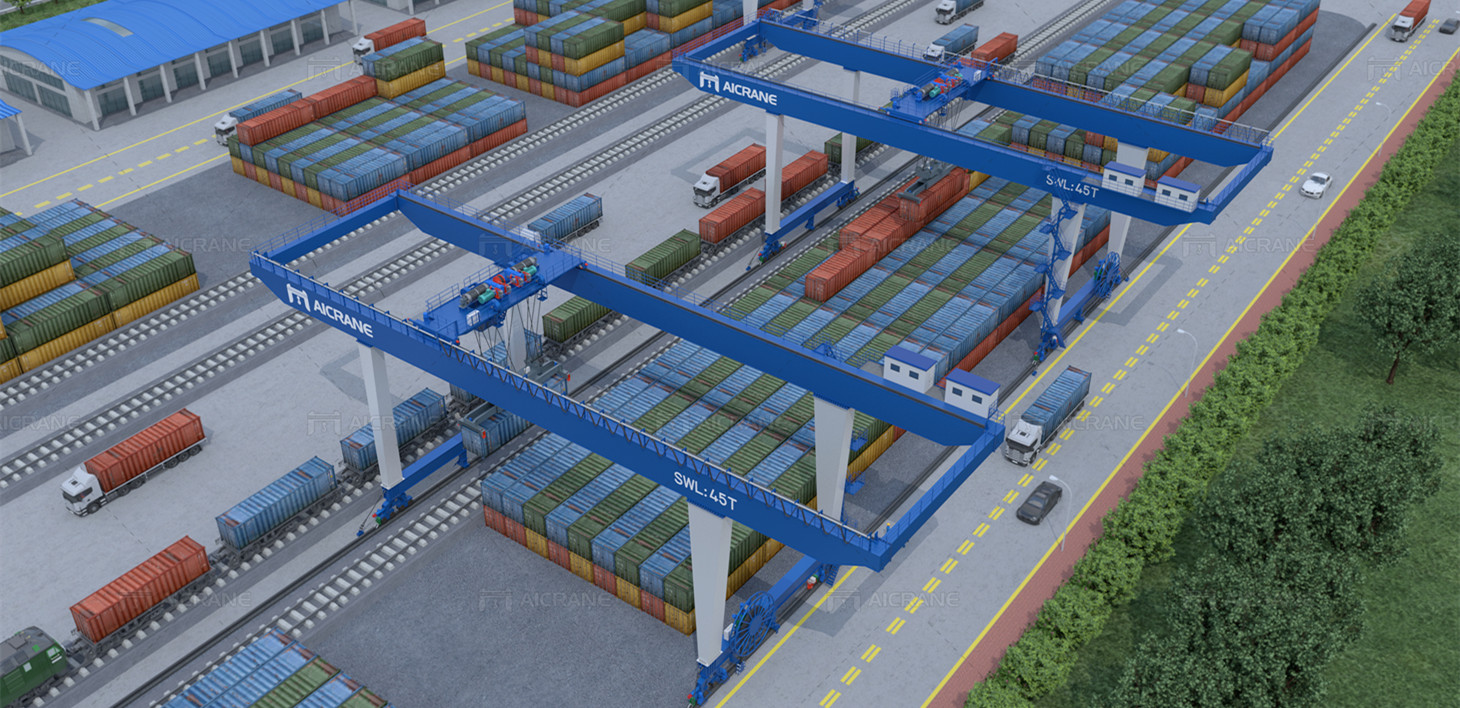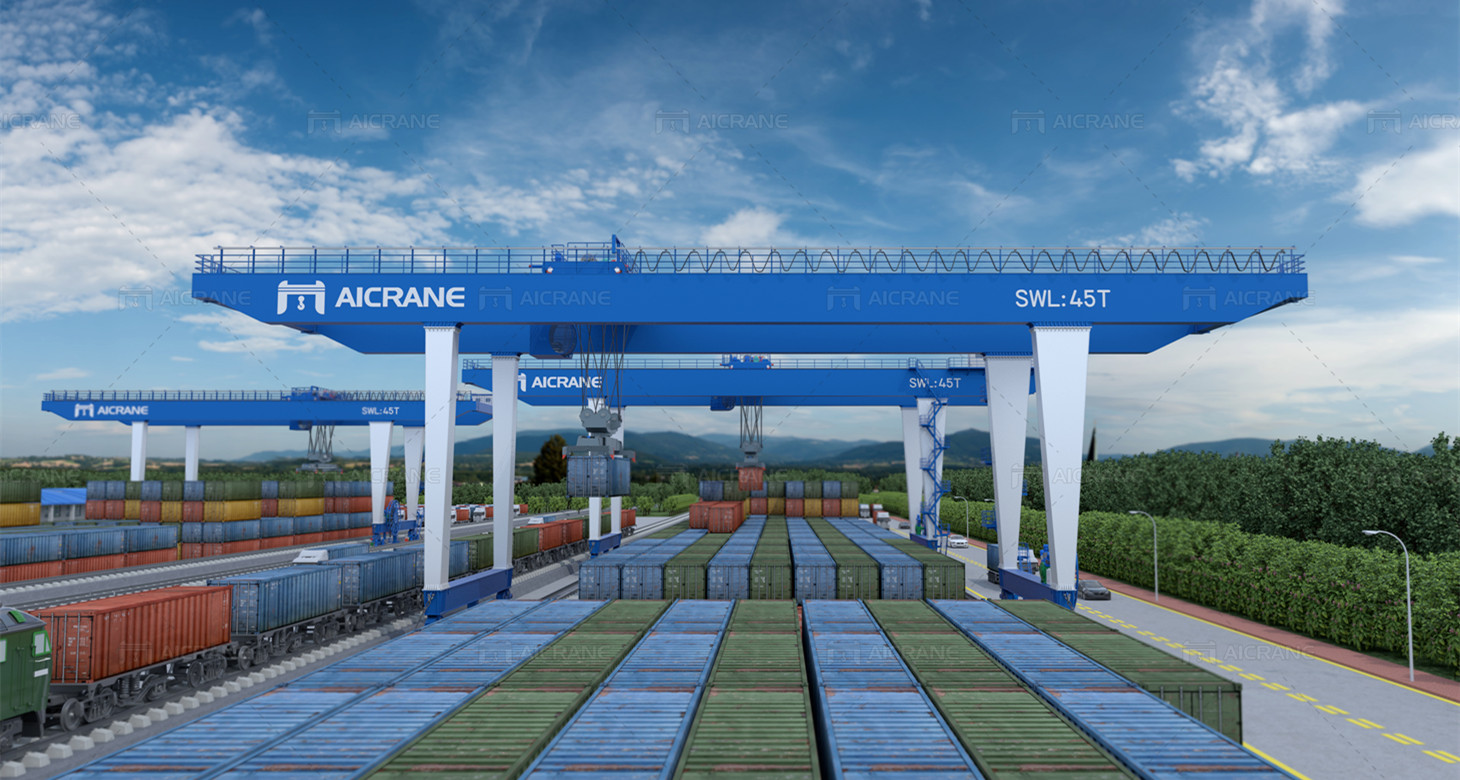Installing a shipping container gantry crane is a complex and meticulous process that involves careful planning, precise engineering, and coordinated execution. These cranes are crucial in port terminals and intermodal facilities, playing a vital role in the handling, loading, and unloading of shipping containers. This article will guide you through the essential steps involved in installing a shipping container gantry crane, highlighting key considerations and safety measures.

Introduction to Shipping Container Gantry Cranes
Shipping container gantry cranes, also known as Rail-Mounted Gantry (RMG) cranes or Rubber-Tyred Gantry (RTG) cranes, are specialized equipment used to lift and transport shipping containers. These cranes straddle the container stacks, moving containers between ships, trucks, and storage yards with remarkable precision. Their installation is a significant undertaking that requires expertise in structural engineering, mechanical systems, and electrical systems.
Pre-Installation Planning
Site Assessment and Preparation
Survey and Soil Testing: Conduct a thorough survey of the installation site to understand the geographical and environmental conditions. Soil testing is crucial to ensure that the ground can support the crane’s weight and movements.
Clearance and Leveling: Clear the site of any obstructions and level the ground. This may involve earthmoving and compaction activities to create a stable base for the crane’s foundation.
Design and Engineering
Structural Design: Collaborate with structural engineers to design the crane foundation and support structures. The design must account for the crane’s load capacity, wind loads, seismic activity, and operational stresses.
Mechanical and Electrical Planning: Design the mechanical systems, including the hoisting mechanisms, trolley systems, and rail or tyre systems. Electrical engineers will design the power supply, control systems, and safety features.
Regulatory Compliance
Permits and Approvals: Obtain necessary permits and approvals from local authorities and regulatory bodies. Ensure compliance with safety standards, environmental regulations, and industry codes by the manufacturer.
Installation Process
Foundation Construction
Excavation and Formwork: Excavate the foundation trenches according to the design specifications. Install formwork to shape the concrete and reinforcement bars to strengthen the foundation.
Concrete Pouring: Pour high-strength concrete into the formwork and allow it to cure properly. This process creates a solid base that can withstand the dynamic loads of the gantry crane.
Crane Assembly
Delivery and Staging: Transport the crane components to the installation site. These components typically include the main girders, legs, trolley, hoist, and electrical systems. Stage the components in a logical order to streamline the assembly process.
Main Structure Assembly: Begin assembling the main structure of the crane. Erect the legs and attach the main girders. This often requires the use of auxiliary cranes or lifting equipment.
Hoist and Trolley Installation: Install the hoisting mechanism and the trolley system on the main structure. Ensure all mechanical connections are secure and aligned correctly.
Rail or Tyre Installation
Rail Installation (for RMG Cranes): Lay and secure the rails according to the design specifications. Precision is crucial to ensure smooth crane movement. The rails must be aligned accurately and anchored firmly to the foundation.
Tyre Installation (for RTG Cranes): Install the rubber tyres and test their movement. Ensure the tyres are properly inflated and aligned to support the crane’s mobility.
Electrical and Control Systems
Power Supply: Connect the crane to the power supply. This may involve installing transformers, switchgear, and cabling. Ensure that the power system is capable of handling the crane’s electrical load.
Control Systems: Install the control systems, including the operator’s cabin, control panels, and automation systems. Test all electrical connections and ensure that the control systems are functional.

Testing and Commissioning
Pre-Operational Testing
Load Testing: Conduct load tests to ensure that the crane can lift and move containers within its specified capacity. Test the hoisting, trolley, and travel mechanisms under various load conditions.
Functional Testing: Test all mechanical and electrical systems to ensure they operate correctly. This includes testing the hoist, trolley, brakes, and safety interlocks.
Safety Inspections
Structural Inspection: Inspect the structural integrity of the crane, including welds, bolts, and connections. Ensure there are no signs of stress or fatigue.
Electrical Inspection: Conduct thorough electrical inspections to ensure all wiring, connections, and control systems are safe and compliant with standards.
Operator Training
Safety Training: Train operators on the safe operation of the crane. This includes emergency procedures, load handling techniques, and daily inspection routines.
Operational Training: Provide hands-on training for operating the control systems and performing routine maintenance tasks.
Post-Installation Considerations
Maintenance Planning
Routine Maintenance: Establish a routine maintenance schedule to keep the crane in optimal working condition. This includes regular inspections, lubrication, and part replacements.
Predictive Maintenance: Implement predictive maintenance practices using sensors and data analytics to anticipate potential issues before they become critical.
Performance Monitoring
Operational Monitoring: Continuously monitor the crane’s performance during operations. Use data analytics to track efficiency, identify bottlenecks, and optimize workflows.
Safety Monitoring: Maintain a focus on safety by monitoring for any signs of wear, stress, or malfunction. Implement corrective actions promptly to mitigate risks.
Installing a shipping container gantry crane is a multifaceted process that requires meticulous planning, precise engineering, and coordinated execution. From site assessment and foundation construction to assembly, testing, and commissioning, each step must be carefully managed to ensure the shipping container gantry crane operates safely and efficiently. By adhering to best practices and regulatory standards, shipyards can leverage the capabilities of gantry cranes to enhance their container handling operations, ensuring efficiency, safety, and productivity.